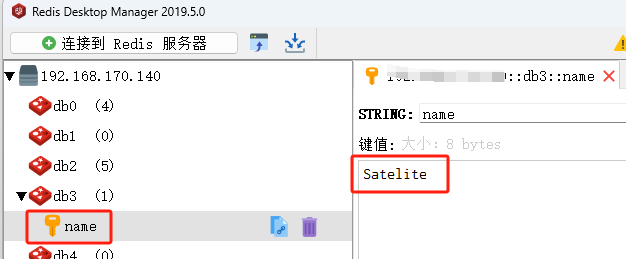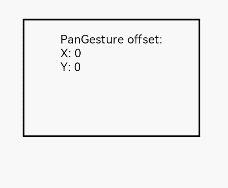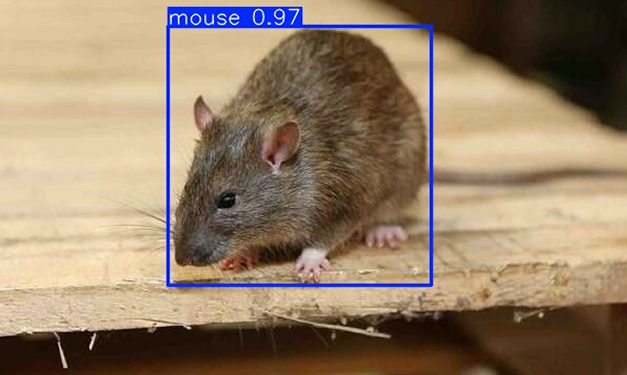下面我们尝试分步演练演示如何使用 C++ AMP 加速矩阵乘法的执行。 提供了两种算法,一种不使用平铺,一种使用平铺,看看两者的差别。
在 Visual Studio 中创建项目
- 在菜单栏上,选择“文件”>“新建”>“项目”,打开“创建新项目”对话框 。
- 在对话框顶部,将“语言”设置为“C++”,将“平台”设置为“Windows”,并将“项目类型”设置为“控制台”。
- 从筛选的项目类型列表中,选择“空项目”,然后选择“下一步”。 在下一页中的“名称”框内输入“MatrixMultiply”以指定项目的名称,并根据需要指定项目位置。

- 选择“创建”按钮创建客户端项目。
- 在“解决方案资源管理器”中,打开“源文件”的快捷菜单,然后选择“添加”>“新项”。
- 在“添加新项”对话框中,选择“C++ 文件(.cpp)”,在“名称”框中输入“MatrixMultiply.cpp”,然后选择“添加”按钮。
不使用平铺的乘法
在本部分中,请考虑两个矩阵(A 和 B)的乘法,定义如下:


A 是 3x2 矩阵,B 是 2x3 矩阵。 A 和 B 的乘积是以下 3x3 矩阵。 乘积通过逐个元素将 A 的行乘以 B 的列进行计算。

在不使用 C++ AMP 的情况下相乘
打开 MatrixMultiply.cpp,并使用以下代码替换现有代码。
#include <iostream>
void MultiplyWithOutAMP() {
int aMatrix[3][2] = {{1, 4}, {2, 5}, {3, 6}};
int bMatrix[2][3] = {{7, 8, 9}, {10, 11, 12}};
int product[3][3] = {{0, 0, 0}, {0, 0, 0}, {0, 0, 0}};
for (int row = 0; row < 3; row++) {
for (int col = 0; col < 3; col++) {
// Multiply the row of A by the column of B to get the row, column of product.
for (int inner = 0; inner < 2; inner++) {
product[row][col] += aMatrix[row][inner] * bMatrix[inner][col];
}
std::cout << product[row][col] << " ";
}
std::cout << "\n";
}
}
int main() {
MultiplyWithOutAMP();
getchar();
}该算法是矩阵乘法定义的简单实现。 它不使用任何并行或线程算法来减少计算时间。
使用 C++ AMP 相乘
1. 在 MatrixMultiply.cpp 中,在 main 方法之前添加以下代码。
void MultiplyWithAMP() {
int aMatrix[] = { 1, 4, 2, 5, 3, 6 };
int bMatrix[] = { 7, 8, 9, 10, 11, 12 };
int productMatrix[] = { 0, 0, 0, 0, 0, 0, 0, 0, 0 };
array_view<int, 2> a(3, 2, aMatrix);
array_view<int, 2> b(2, 3, bMatrix);
array_view<int, 2> product(3, 3, productMatrix);
parallel_for_each(product.extent,
[=] (index<2> idx) restrict(amp) {
int row = idx[0];
int col = idx[1];
for (int inner = 0; inner <2; inner++) {
product[idx] += a(row, inner)* b(inner, col);
}
});
product.synchronize();
for (int row = 0; row <3; row++) {
for (int col = 0; col <3; col++) {
//std::cout << productMatrix[row*3 + col] << " ";
std::cout << product(row, col) << " ";
}
std::cout << "\n";
}
}AMP 代码类似于非 AMP 代码。 对 parallel_for_each 的调用为 product.extent 中的每个元素启动一个线程,并替换行和列的 for 循环。 idx 中提供了行和列的单元格的值。 可以使用 [] 运算符和索引变量,或者 () 运算符和行列变量来访问 array_view 对象的元素。 示例演示两种方法。 array_view::synchronize 方法将 product 变量的值复制回 productMatrix 变量。
2. 在 MatrixMultiply.cpp 的顶部添加以下 include 和 using 语句。
#include <amp.h>
using namespace concurrency;3. 修改 main 方法以调用 MultiplyWithAMP 方法。
int main() {
MultiplyWithOutAMP();
MultiplyWithAMP();
getchar();
}使用平铺
平铺是一种将数据分区成大小相等的子集(称为平铺)的技术。 使用平铺时会有三个改变。
- 可以创建 tile_static 变量。 访问 tile_static 空间中的数据可能比访问全局空间中的数据要快得多。 为每个平铺创建 tile_static 变量的实例,平铺中的所有线程可以访问该变量。 平铺的主要好处是可以从 tile_static 访问中获得性能增益;
- 可以调用 tile_barrier::wait 方法,以在指定代码行的一个平铺中停止所有线程。 不能保证线程的运行顺序,只有一个平铺中的所有线程都在调用 tile_barrier::wait 时停止,才能继续执行;
- 可以访问相对于整个 array_view 对象的索引以及相对于平铺的索引。 使用局部索引可使代码更易于阅读和调试;
若要利用矩阵乘法中的平铺,算法必须将矩阵分区成平铺,然后将平铺数据复制到 tile_static 变量中以加快访问速度。 在此示例中,矩阵分区成大小相等的子矩阵。 乘积通过将子矩阵相乘而得出。 此示例中的两个矩阵及其乘积为:



矩阵分区成四个 2x2 矩阵,定义如下:


现在可以按以下方式撰写和计算 A 和 B 的乘积:

由于矩阵 a 到 h 是 2x2 矩阵,因此其所有乘积及和也是 2x2 矩阵。 它还遵循 A 和 B 的乘积是 4x4 矩阵,与预期一样。 若要快速检查算法,请计算乘积中第一行与第一列相交处的元素的值。 在此示例中,这将是 ae + bg 的第一行与第一列相交处的元素的值。 只需计算每个术语的 ae 和 bg 的第一列与第一行。 ae 的值为 (1 * 1) + (2 * 5) = 11。 (3 * 1) + (4 * 5) = 23 的值为 bg。 最终值是正确的 11 + 23 = 34。
若要实现此算法,代码:
- 在 parallel_for_each 调用中使用 tiled_extent 对象,而不是 extent 对象;
- 在 parallel_for_each 调用中使用 tiled_index 对象,而不是 index 对象;
- 创建 tile_static 变量以保留子矩阵;
- 使用 tile_barrier::wait 方法停止线程以计算子矩阵的乘积;
使用 AMP 和平铺相乘
1. 在 MatrixMultiply.cpp 中,在 main 方法之前添加以下代码。
void MultiplyWithTiling() {
// The tile size is 2.
static const int TS = 2;
// The raw data.
int aMatrix[] = { 1, 2, 3, 4, 5, 6, 7, 8, 1, 2, 3, 4, 5, 6, 7, 8 };
int bMatrix[] = { 1, 2, 3, 4, 5, 6, 7, 8, 1, 2, 3, 4, 5, 6, 7, 8 };
int productMatrix[] = { 0, 0, 0, 0, 0, 0, 0, 0, 0, 0, 0, 0, 0, 0, 0, 0 };
// Create the array_view objects.
array_view<int, 2> a(4, 4, aMatrix);
array_view<int, 2> b(4, 4, bMatrix);
array_view<int, 2> product(4, 4, productMatrix);
// Call parallel_for_each by using 2x2 tiles.
parallel_for_each(product.extent.tile<TS, TS>(),
[=] (tiled_index<TS, TS> t_idx) restrict(amp)
{
// Get the location of the thread relative to the tile (row, col)
// and the entire array_view (rowGlobal, colGlobal).
int row = t_idx.local[0];
int col = t_idx.local[1];
int rowGlobal = t_idx.global[0];
int colGlobal = t_idx.global[1];
int sum = 0;
// Given a 4x4 matrix and a 2x2 tile size, this loop executes twice for each thread.
// For the first tile and the first loop, it copies a into locA and e into locB.
// For the first tile and the second loop, it copies b into locA and g into locB.
for (int i = 0; i < 4; i += TS) {
tile_static int locA[TS][TS];
tile_static int locB[TS][TS];
locA[row][col] = a(rowGlobal, col + i);
locB[row][col] = b(row + i, colGlobal);
// The threads in the tile all wait here until locA and locB are filled.
t_idx.barrier.wait();
// Return the product for the thread. The sum is retained across
// both iterations of the loop, in effect adding the two products
// together, for example, a*e.
for (int k = 0; k < TS; k++) {
sum += locA[row][k] * locB[k][col];
}
// All threads must wait until the sums are calculated. If any threads
// moved ahead, the values in locA and locB would change.
t_idx.barrier.wait();
// Now go on to the next iteration of the loop.
}
// After both iterations of the loop, copy the sum to the product variable by using the global location.
product[t_idx.global] = sum;
});
// Copy the contents of product back to the productMatrix variable.
product.synchronize();
for (int row = 0; row <4; row++) {
for (int col = 0; col <4; col++) {
// The results are available from both the product and productMatrix variables.
//std::cout << productMatrix[row*3 + col] << " ";
std::cout << product(row, col) << " ";
}
std::cout << "\n";
}
}此示例明显不同于不使用平铺的示例。 代码使用以下概念步骤:
- 将 a 的平铺[0,0] 的元素复制到 locA 中。 将 b 的平铺[0,0] 的元素复制到 locB 中。 请注意,product 是平铺的,而不是 a 和 b。 因此,使用全局索引访问 a, b 和 product。 调用 tile_barrier::wait 至关重要。 它会停止平铺中的所有线程,直到填充完 locA 和 locB;
- 将 locA 与 locB 相乘并将结果放入 product 中;
- 将 a 的 tile[0,1] 的元素复制到 locA 中。 将 b 的 tile[1,0] 的元素复制到 locB 中;
- 将 locA 与 locB 相乘并将它们添加到已在 product 中的结果;
- tile[0,0] 的乘法已完成;
- 对其他四个平铺重复上述步骤。 没有专门为平铺编制索引,线程可以按任意顺序执行。 执行每个线程时,会相应地为每个平铺创建 tile_static 变量,并且对 tile_barrier::wait 的调用控制程序流;
- 仔细检查算法时,请注意,每个子矩阵都加载到 tile_static 内存中两次。 数据传输确实需要一段时间。 但是,一旦数据位于 tile_static 内存中,对数据的访问速度要快得多。 由于计算乘积需要重复访问子矩阵中的值,因此总体性能提升。 对于每种算法,需要试验才能找到最佳算法和平铺大小;
在非 AMP 和非平铺示例中,从全局内存访问 A 和 B 的每个元素四次,以计算乘积。 在平铺示例中,每个元素从全局内存访问两次,并从 tile_static 内存访问四次。 这不是显著的性能提升。 但是,如果 A 和 B 是 1024x1024 矩阵,平铺大小为 16,则性能将显著提升。 在这种情况下,每个元素将仅复制到 tile_static 内存中 16 次,并从 tile_static 内存访问 1024 次。
2. 如下所示修改 main 方法以调用 MultiplyWithTiling 方法。
int main() {
MultiplyWithOutAMP();
MultiplyWithAMP();
MultiplyWithTiling();
getchar();
}编译并运行;
![[Algorithm][综合训练][过桥][最大差值][兑换零钱]详细讲解](https://i-blog.csdnimg.cn/direct/44202091b89a408c96b7be86da7184c3.png)


















